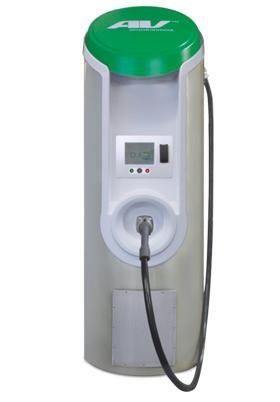Electric Highway becoming a reality – north of California
Washington State’s Department of Transportation announced the opening of 10 new electric vehicle (EV) charging stations, eight of which feature DC fast chargers.
The ten new stations include seven along Interstate 5 and three on US Highway 2. DC fast charge locations include Bellingham, Burlington, Tumwater, Centralia, and Ridgefield along Interstate 5. DC fast charge locations along highway 2 are located at Sultan, Skykomish, and Leavenworth. In addition there are two Level 2 only stations at Custer and Ridgefield. All of the DC fast charge locations will also have a Level 2 charging dock available.
While entire states (Oregon and Washington) seem to able to coordinate the installation and operation of a DC fast charge network, California – which has a larger EV population than either of these two states thus far – is woefully lagging in the cohesive development of an infrastructure. Plugshare.com now shows a handful of DC fast chargers in Northern California (greater San Francisco Bay Area) and a couple in the Los Angeles area, but we have nowhere near the coordinated development being seen in our neighboring states to the north. While some have lamented the upcoming NRG/PUC settlement, we still see it as a move that will help California catch up with states such as Oregon, Washington and Tennessee.


Still waiting here in SoCal….. ;-/
Visited the Ridgefield site on Sunday. It just happens to be at one of our favorite restaurants. Tried both the CHAdeMO and the 1772 machines and both seem to be working fine. One note, I did not see a way to limit the charge on the CHAdeMO, it will happily run right up to 100% if you are not there to stop it. This is unlike the Blink unit which allows you to set the target percent full when you start the session. As of today there is good coverage on I-5 I Southern Oregon and much of Washington, but there is still a big gap in Northern Oregon.
Steve – Thanks for the feedback.
Interesting about the CHAdeMO charger. My impression was that all of them took direction from the onboard battery management system (BMS) which dictated that the charge taper off at the 80% point. Perhaps different manufacturer’s equipment interacts differently with the BMS. If anyone else has input, feel free to chime in.
Also, at least your Northwest Territory gap is just in Northern Oregon. Our Southwest Territory gap starts at the California-Oregon state line.